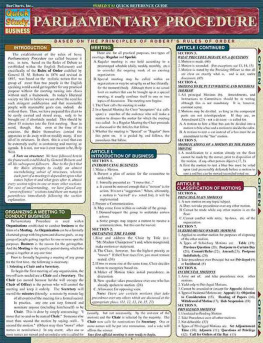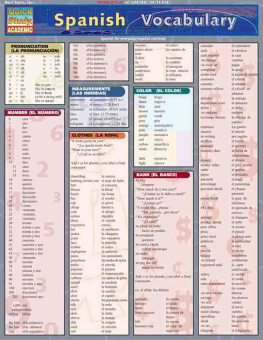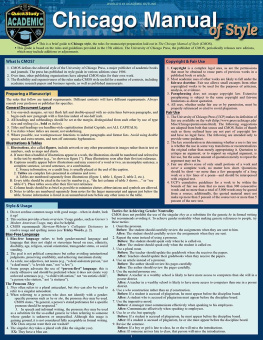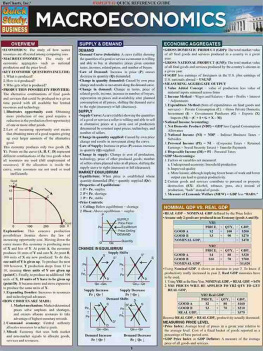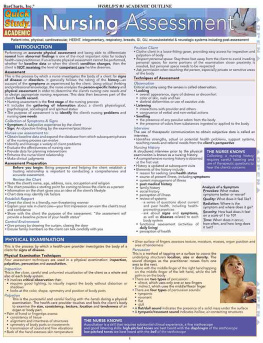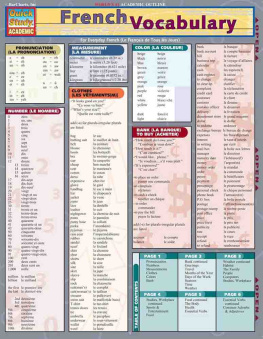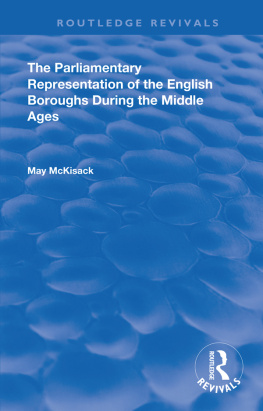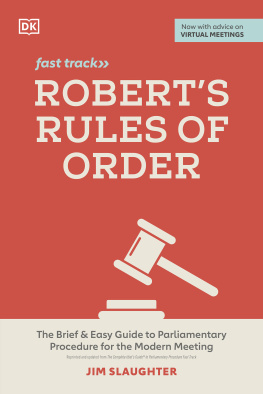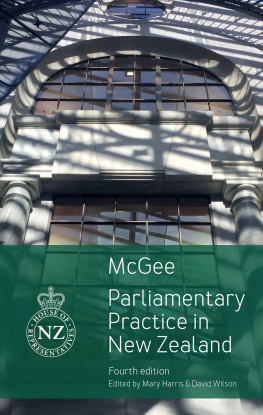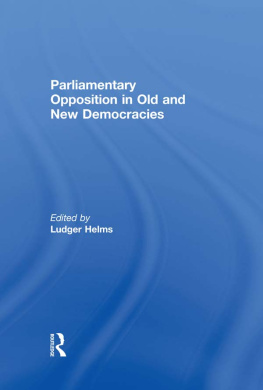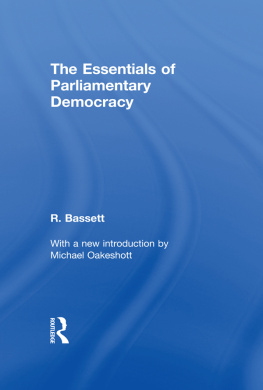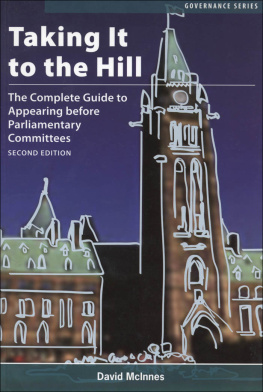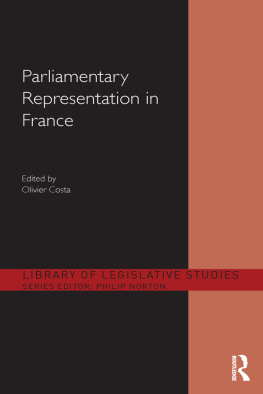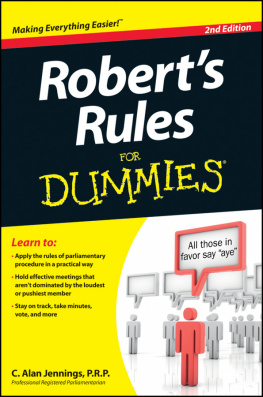BarCharts - Parliamentary Procedure
Here you can read online BarCharts - Parliamentary Procedure full text of the book (entire story) in english for free. Download pdf and epub, get meaning, cover and reviews about this ebook. year: 2009, publisher: BarCharts, Inc., genre: Children. Description of the work, (preface) as well as reviews are available. Best literature library LitArk.com created for fans of good reading and offers a wide selection of genres:
Romance novel
Science fiction
Adventure
Detective
Science
History
Home and family
Prose
Art
Politics
Computer
Non-fiction
Religion
Business
Children
Humor
Choose a favorite category and find really read worthwhile books. Enjoy immersion in the world of imagination, feel the emotions of the characters or learn something new for yourself, make an fascinating discovery.
Parliamentary Procedure: summary, description and annotation
We offer to read an annotation, description, summary or preface (depends on what the author of the book "Parliamentary Procedure" wrote himself). If you haven't found the necessary information about the book — write in the comments, we will try to find it.
This guide outlines the basic concepts and principles of parliamentary procedures.
Parliamentary Procedure — read online for free the complete book (whole text) full work
Below is the text of the book, divided by pages. System saving the place of the last page read, allows you to conveniently read the book "Parliamentary Procedure" online for free, without having to search again every time where you left off. Put a bookmark, and you can go to the page where you finished reading at any time.
Font size:
Interval:
Bookmark:

The establishment of the rules of basicParliamentary Procedure (so called because it was, in turn, based on the Rules of Debate as established within the English Parliament) and specifically of the Rules of Order codified by General H. M. Roberts in 1876 and revised in 1893, was based on the realistic notion that no group of more than two people in the English speaking world could get together for any practicalpurpose without the meeting turning into chaoswithout such a framework. In today's liberatedsociety we like to believe we are above the need for such stringent codification and that reasonable people with reasonable goals can, indeed, do without them. Thus, we have prepared this chart to be easily carried and stored away, only to be brought out if absolutely needed. This should be about 15 minutes into the first meeting. Bear in mind, though, that, even at the time of its creation, the Rules themselves carried the apparatus to do away with or modify many, if not all of its strictures. In short, this is a tool that canbe extremely useful in containing and moving anagenda. It is not, nor was it ever meant to be, Holy Writ.
A Note on structure:We have followed hereinthe framework established by General Roberts andall his subsequent followers. Due to the fact thatthe Rules attempts to codify an almostoverwhelming subset of structures, whereineach part of a meeting is dependent upon whatcomes before it and what goes after it, almostevery section refers to one or more other sections.For ease of understanding, we have placed anycross-reference sections (and there are many) inparentheses immediately following the sectionexplanation.

Parliamentary Procedure is used withinOrganizations established to conduct business in theform of a Meeting. An Organization can be a formallychartered group with long term and diverse goals, or any group of people getting together for one or more specific purposes. Business is the reason for the get-together. And the Meeting is the specific period during which thegroup is together at any one time.
Prior to formally beginning a meeting of any group for the first time, the following is necessary:
- Selecting a Chair and a Secretary.To begin the first meeting of any organization, thetwo officers needed are a Chair and a Secretary. TheChair (so named because he/she will occupy theChair of Office) is the person who will control themeeting and keep it orderly. The Secretary willrecord the minutes (literally: a minute by minute logof all events) of the meeting for a formal record.In practice, any one can step forward andnominate anyone (including him/herself) to beChair. This is done by simply announcing: "Imove that so-and-so be named Chair." Someone elsemust then second the motion by saying...well... "Isecond the motion." (Others may then "move" othernames in nomination.) In any event, after one ormore names are moved and seconded a vote is called for(usually, but not necessarily, by the initiator of themotion) and the Chair is selected by the majority. TheChair now calls for nominations for Secretary. One ormore names will be put into nomination, and a vote willaffirm the winner.Your first official meeting is now ready to begin.

There are, for all practical purposes, two types of meetings: Regular and Special.
- Regular meeting is one held according to a prearranged schedule (daily, weekly, monthly, etc.) to consider the ongoing work of an existing organization.
- Special meeting may be called within anorganization or may be set up by an ad hoc (literally: for the moment) body. Although there is no actual limit on matters that can be brought up at a special meeting, it usually confines itself to one or two topics of discussion. The meeting now begins:
- The Chair calls the meeting to order.
- In a Special Meeting the Chair "recognizes" (i.e. callsupon) a member of the audience who will make amotion to discuss the matter for which the meetingwas called. In a Regular Meeting the Chair proceedsas discussed in the Articles that follow.
- Whether the meeting is "Special" or "Regular" from this point on, it is guided by, and follows, the procedures that follow.

SECTION 1.
INTRODUCING BUSINESS
- Make a Motion.
- Present a plan of action for the committee to undertake.
- Formally presented as: "I move that..."
- It cannot be stressed enough that a "motion" is foraction. It is not a "suggestion." When, ultimately, a motion is "carried" (i.e. voted for), it will be implemented.
- Formally presented as: "I move that..."
- Present a plan of action for the committee to undertake.
- Present a Communication.
- May come from within or outside of the group.
- Demand/request the group to undertake certain actions.
- Some groups may require a motion to receive a communication, but this can be waived.
- Demand/request the group to undertake certain actions.
- May come from within or outside of the group.
SECTION 2.
OBTAINING THE FLOOR
- Rise and address the Chair by Title (i.e."Mr./Madam Chairperson") and, when recognized, make motion or statement.
- The Chair, however, has the highest priority as "mover." If the Chair rises first, you must remain seated. (36)
- Maker of Motion takes initial precedence, indiscussion.
- New speaker takes precedence over one who hasalready spoken to motion. (26)
- Allowance for opposing view.
Note:There are certain motions that takeprecedence over any others which are discussed at the appropriate place. (11, 12, 13, 14, 15, 27)
SECTION 3.
WHAT PRECEDES DEBATE ON A QUESTION
- Motion is made. (46)
- Motion is seconded. (For exceptions see 13, 14, 15)
- Motion is stated by the Presiding Officer so that all are clear on exactly what is, and is not, underdiscussion. (65)
SECTION 4.
MOTIONS TO BE PUT IN WRITING AND DIVISIONS
THEREOF- All principal Motions (6), Amendments, and Instructions to Committees should be in writing although this is not mandatory. It is, however, common sense.
- Motions may be divided, as long as the componentparts are not interdependent. If they are, anAmendment (23) - not a division - is called for.
Font size:
Interval:
Bookmark:
Similar books «Parliamentary Procedure»
Look at similar books to Parliamentary Procedure. We have selected literature similar in name and meaning in the hope of providing readers with more options to find new, interesting, not yet read works.
Discussion, reviews of the book Parliamentary Procedure and just readers' own opinions. Leave your comments, write what you think about the work, its meaning or the main characters. Specify what exactly you liked and what you didn't like, and why you think so.

